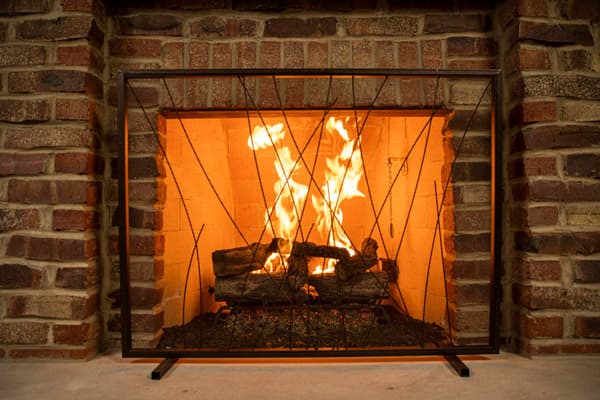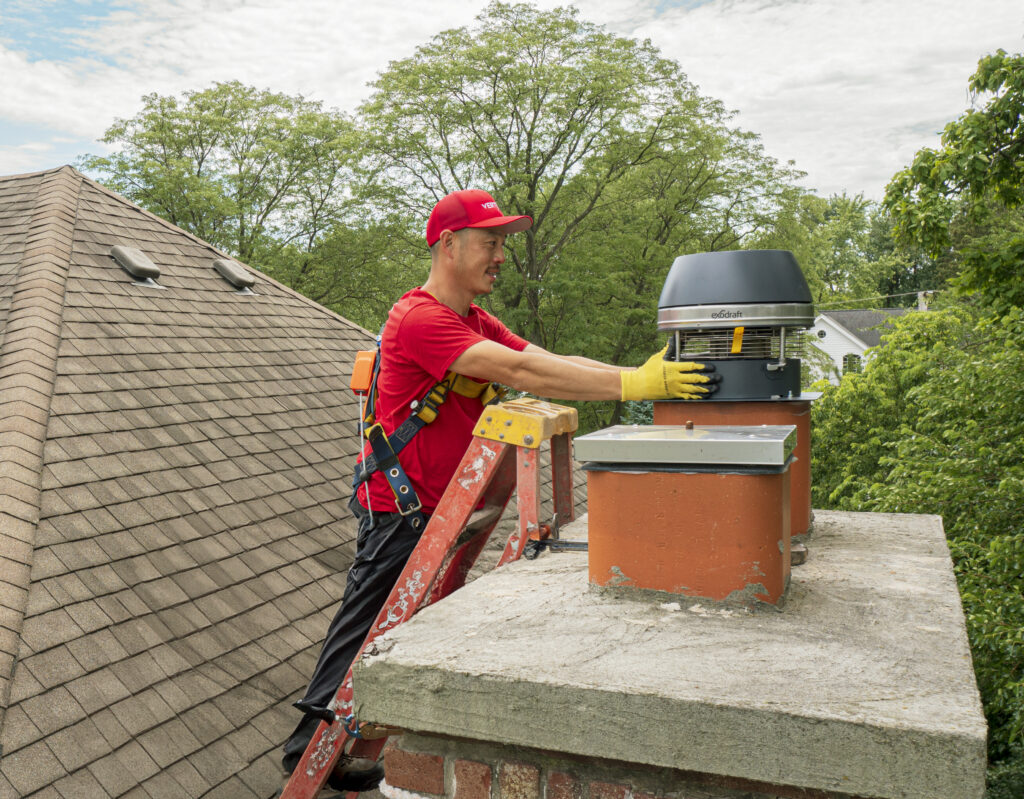
The fireplace has undergone several upgrades throughout its extensive history. Numerous inventors have improved upon the original design to create a more functional and efficient product. By the time central heating became of widespread use in residential homes, the gas fireplace appeared. While it’s not known who exactly invented the first gas log fireplace, we can date its initial usage back to the early 1900s.
The Fireplace Grate
Modern fireplaces have Prine Rupert of the Rhine to thank. Even gas fireplaces, which were a long way off in the timeline of fireplace inventions, benefited from Prince Rupert’s design of the fireplace grate. In 1676, Prince Rupert created the fireplace grate to allow air to pass beneath the wood from underneath. This increased oxygen increased the airflow, making for better fires. Prince Rupert also created a baffle to control the air and reduce smoke. Fires lasted long and performed more efficiently with these inventions.

The Franklin Stove
When talking about fireplace inventions, it’s necessary to mention the Franklin stove, its namesake derived from famous American statesman and inventor, Benjamin Franklin. Invented in the 1740s, the Franklin stove is a metal-lined insert with an idiosyncratic hollow baffle that channeled the flow of the fire’s fumes and a unique upside-down siphon as its flue. The purpose of the Franklin stove was to create more heat and less smoke within a masonry open fireplace.
The design was improved upon by American inventor David Rittenhouse, allowing the stove finally enjoy widespread popularity. The stove is also known as the Pennsylvania fireplace or circulating stove.
The First Major Upgrade
Sir Benjamin Thompson—also known as Count Rumsford—was the inventor behind a revolutionary fireplace design that became the basis for all fireplaces still used to this day. In 1796, shortly after the debut of the Franklin stove, Count Rumsford invented a fireplace model that was taller than it was wide with small, shallow covings sharply flanking the sides. Thanks to its narrow throat, the model was able to disperse smoke and air faster than the standard fireplace.
This model with a shallow firebox allowed for additional heat to enter the room, while at the same time, created a more efficient route for smoke to be expelled.

The First Fireplace Inserts
The Victorian Era saw increasingly ornate fireplace designs. Mantles flourished with details and the side supports were just as lavish. These fireplaces in the 1800s also introduced the first use of fireplace inserts. These inserts were a cast-iron combination. Fireplaces during this time period were transformed by skilled designers to utilize higher quality of materials and take up less space in a home. It is during this period when homeowners began to appreciate fireplaces for more than pure functionality, but for their ambiance.
Electric Fireplaces
You might be surprised to find out that electric fireplaces followed shortly after the invention of the gas fireplace. Originally used for set props in theater performances around 1912, these early electric fireplace models looked just like a real fireplace, only they didn’t produce an actual fire (that was left to the imagination of the stagehands).
It would be a long time before the electric fireplace really hit the market. For much of their early design, electric fireplaces were too expensive to install and maintain, plus many Americans didn’t have electricity in their homes back then. Modern electric fireplaces have fortunately worked out all of these kinks and have become energy inefficient and easy to use (and there’s the added benefit of Americans having electricity in their homes, of course).

Introduction of Gas Fireplaces
It wasn’t long after gas became widely used as a means to heat residences when gas fireplaces first appeared. Although there is no known inventor of the gas fireplace, we can date gas fireplaces back to 1895, shortly after the debut of the first cast-iron fireplace inserts. The very first gas fireplaces consisted of simple, standalone gas burners that were moveable.
Gas fireplaces became regularly sold on the market during the 1920s, although they would not hit their peak popularity until the 1950s.
Gas fireplaces became more prevalent mid-century, partially thanks to the Clean Air Act of 1956 which promoted an eco-friendlier society. However, gas fireplaces were simply a more attractive option than a wood-burning fireplace. The improvement of the visual appearances of the logs and flames attracted more and more consumers. Decades later, the 1990s revitalized gas fireplace designs with realistic flame technology, safer and more improved venting systems, and overall energy efficiency.
People began to favor the gas fireplace over its wood-burning counterpart because it didn’t produce ash and debris. The gas fireplace was fuss-free with relatively no maintenance or cleanup required. These fireplaces were popular thanks to their sheer convenience and efficiency that didn’t sacrifice the ambiance or warmth of a wood-burning fireplace.
Vertical has been in the chimney care business for over 35 years, and we have devoted our time and energy to bring safety to your home. We have spent all 35 years making sure we give our customers the best possible service. Take your chimney to a higher standard with Vertical and contact us today to get a free quote!
